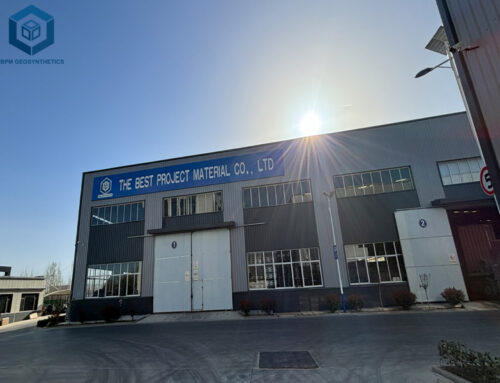Non Woven Geotextile Landscape Fabric offers exceptional advantages in modern landscaping and civil engineering applications, providing superior soil stabilization, weed control, and moisture management for sustainable project outcomes. As an industry-leading innovator, BPM Geotextile manufactures premium-quality non-woven geotextile fabrics that combine high tensile strength with excellent permeability, making them ideal for erosion control, garden landscaping, and infrastructure projects. These engineered fabrics effectively separate soil layers while allowing optimal water drainage, preventing root damage and maintaining landscape integrity. With UV resistance and durability against environmental stressors, BPM Geotextile’s solutions ensure long-term performance in residential, commercial and municipal applications, delivering cost-effective and eco-friendly alternatives to traditional landscaping methods.
1. What is Non woven geotextile landscape fabric?
Non-woven geotextile landscape fabric is a permeable textile material commonly used in landscaping and construction for applications such as soil stabilization, erosion control, weed suppression, and drainage. It is manufactured from synthetic fibers, usually polypropylene or polyester, which are bonded together using mechanical, thermal, or chemical methods instead of being woven.
Types of Non woven geotextile landscape fabric
Non Woven Geotextile Landscape Fabric is a versatile material widely used in landscaping, erosion control, and soil stabilization. BPM Geotextile offers high-quality non-woven geotextile fabrics designed for different applications. Below are the main types available:
1.1 Lightweight Non Woven Geotextile (80-150 gsm)
- Ideal for garden landscaping, weed control, and temporary erosion protection
- Provides excellent filtration and separation for flower beds and pathways
- BPM Geotextile’s lightweight fabric is easy to install and cost-effective
1.2 Medium-Weight Non Woven Geotextile (150-300 gsm)
- Suitable for road shoulder stabilization, drainage systems, and turf reinforcement
- Enhances soil strength while allowing proper water flow
- BPM Geotextile’s medium-weight fabric offers durability for long-term projects
1.3 Heavy-Duty Non Woven Geotextile (300-500+ gsm)
- Used in civil engineering, landfills, and slope reinforcement
- Provides superior puncture resistance and load distribution
- BPM Geotextile’s heavy-duty fabric ensures stability in demanding environments
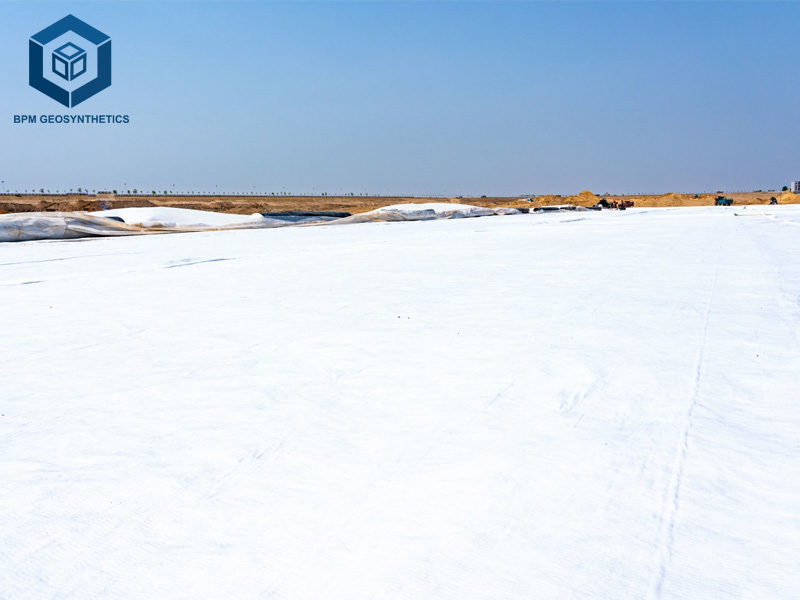
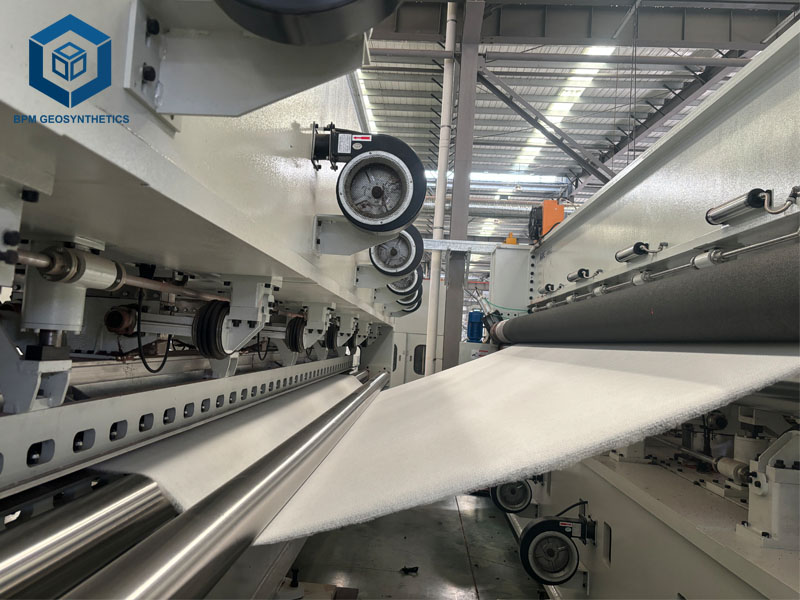
2. What Are Advantages Of Non Woven Geotextile Landscape Fabric?
Non-woven geotextile landscape fabric is a highly versatile and beneficial material widely used in landscaping, construction, and environmental projects. Its unique properties make it an ideal choice for a variety of applications, offering both functional and economic advantages.
2.1 Non Woven Geotextile Landscape Fabric – Permeability and Drainage
Non-woven geotextile fabric is designed to allow water and air to pass through while retaining soil particles. This promotes proper drainage, prevents waterlogging, and helps maintain soil structure, making it ideal for use in drainage systems, garden beds, and slopes.
2.2 Non Woven Geotextile Landscape Fabric – Erosion Control
The fabric stabilizes soil on slopes, embankments, and other vulnerable areas, reducing the risk of erosion caused by wind, rain, or runoff. It holds soil in place while allowing vegetation to grow, providing long-term erosion protection.
2.3 Non Woven Geotextile Landscape Fabric – Weed Suppression
Non Woven Geotextile Fabric acts as a physical barrier to prevent weed growth. It blocks sunlight from reaching weed seeds while still allowing water and nutrients to penetrate the soil, reducing the need for chemical herbicides and saving time on maintenance.
2.4 Non Woven Geotextile Landscape Fabric – Soil Stabilization
By reinforcing weak or unstable soils, the fabric prevents shifting or settling, which is particularly useful in road construction, retaining walls, and foundations. It distributes loads evenly, enhancing the stability and longevity of structures.
2.5 Non Woven Geotextile Landscape Fabric – Separation of Layers
The Non Woven Geotextile Fabric prevents the mixing of different soil layers or materials, such as gravel and soil. This maintains the integrity and functionality of the structure, ensuring optimal performance in applications like roadbeds and railway tracks.
2.6 Non Woven Geotextile Landscape Fabric – Durability and Longevity
Made from synthetic fibers like polypropylene or polyester, non-woven geotextile fabric is resistant to UV rays, chemicals, and biological degradation. This ensures it remains effective even in harsh environmental conditions.
2.7 Non Woven Geotextile Landscape Fabric – Cost-Effectiveness
By reducing soil erosion, weed growth, and the need for frequent repairs, non-woven geotextile fabric lowers maintenance costs. Its long lifespan also makes it a cost-efficient solution for large-scale projects.
2.8 Non Woven Geotextile Landscape Fabric – Easy Installation
The Non Woven Geotextile Fabric is lightweight, flexible, and easy to cut and shape, making it simple to install on uneven or complex surfaces. This saves time and labor during project implementation.
2.9 Versatility
Non-woven geotextile fabric is suitable for a wide range of applications, including drainage systems, road construction, landfills, ponds, and landscaping. It can be customized in terms of weight, thickness, and strength to meet specific project needs.
2.10 Environmental Benefits
The fabric promotes sustainable practices by reducing soil erosion, improving water management, and minimizing the use of chemicals. It also supports vegetation growth, contributing to ecological restoration.
2.11 High Tensile Strength
With excellent strength and puncture resistance, the fabric is ideal for heavy-duty applications like roadways, landfills, and embankments.
2.12 Low Maintenance
Once installed, non-woven geotextile fabric requires minimal upkeep, saving time and resources over the long term.
These advantages make non-woven geotextile landscape fabric an essential material for enhancing the performance, durability, and sustainability of construction and landscaping projects.
3. How Long Does Non Woven Geotextile Landscape Fabric Typically Last?
The lifespan of non-woven geotextile fabric depends on several factors, including the material quality, environmental conditions, and the specific application. However, under normal conditions, non-woven geotextile fabric can last anywhere from 10 to 20 years or more.
Factors Affecting Lifespan
3.1 Material Quality:
High-quality non-woven geotextile fabrics made from UV-stabilized polypropylene or polyester tend to last longer. These materials are resistant to degradation from sunlight, chemicals, and biological factors.
3.2 UV Exposure:
If the fabric is exposed to direct sunlight for extended periods, its lifespan may be reduced unless it is UV-stabilized. UV-stabilized fabrics can withstand sunlight exposure for many years without significant degradation.
3.3 Environmental Conditions:
Harsh environments, such as areas with extreme temperatures, high acidity, or alkaline soils, can affect the fabric’s durability. However, synthetic fibers like polypropylene and polyester are generally resistant to most environmental stressors.
3.4 Application and Stress:
The fabric’s lifespan varies depending on its use. For example:
In lightweight applications like weed control or garden beds, it may last longer (15–20 years).
In heavy-duty applications like road construction or landfill liners, where it is subjected to high stress and abrasion, the lifespan may be shorter (10–15 years).
3.5 Installation Quality:
Proper installation, including adequate overlap, securing with pins or staples, and avoiding punctures during installation, can significantly extend the fabric’s lifespan.
3.6 Maintenance:
While non-woven geotextile fabric is low-maintenance, periodic inspections and repairs (if damaged) can help prolong its effectiveness.
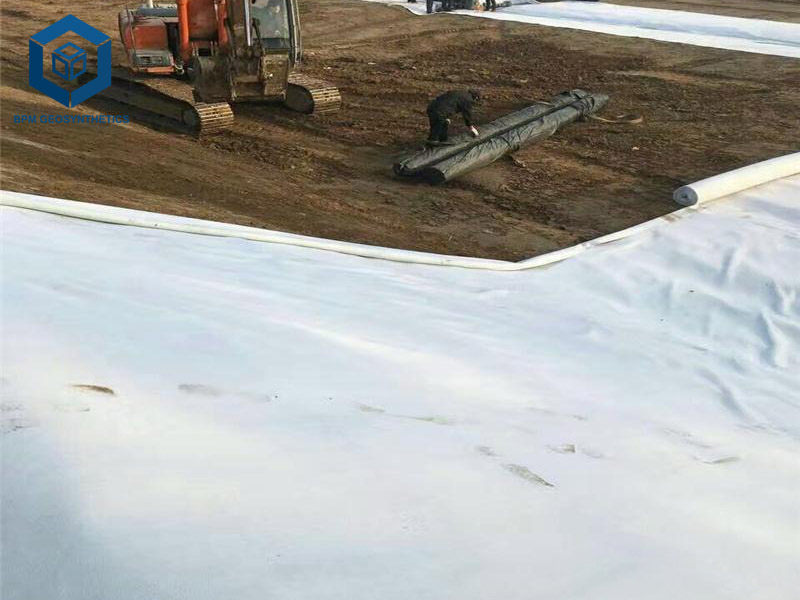
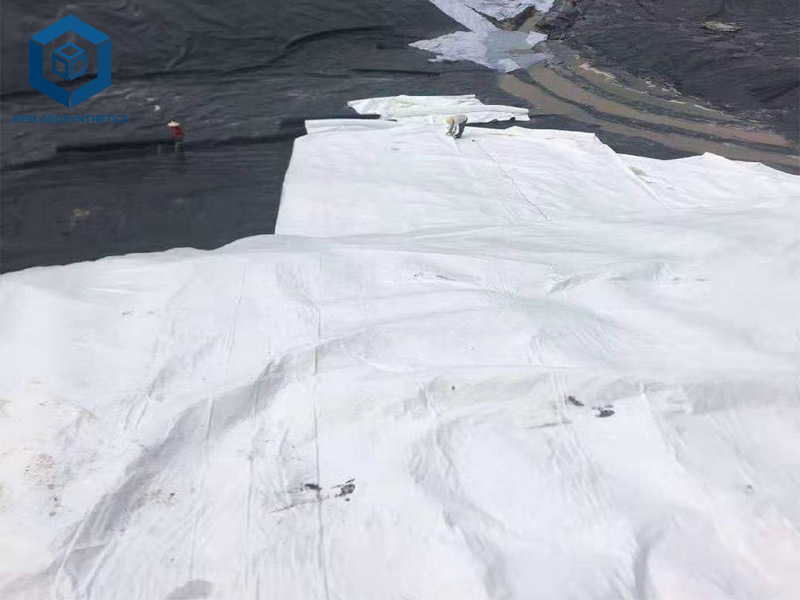
4. Typical Lifespan by Application
- Landscaping and Weed Control: 15–20 years (if covered with mulch or soil and protected from UV exposure).
- Erosion Control: 10–15 years (depending on environmental stress and exposure).
- Road Construction: 10–20 years (depending on traffic load and subgrade conditions).
- Drainage Systems: 15–20 years (if properly installed and protected from clogging).
- Landfill Liners and Caps: 20+ years (due to the high-quality materials used and protective cover layers).
5. Summary
In conclusion, non-woven geotextile fabric offers numerous industrial advantages including superior filtration, enhanced soil stabilization, effective separation, and excellent drainage capabilities. These engineered fabrics provide robust erosion control, chemical/UV resistance, cost efficiency, and environmental sustainability – making them indispensable for modern construction and infrastructure projects. BPM Geotextile delivers premium-quality non-woven geotextile solutions that meet the highest industry standards, ensuring optimal performance in demanding applications from road construction to environmental protection. With BPM’s expertise and reliable products, engineers and project managers can achieve long-lasting, high-performance results while optimizing project costs and sustainability. Trust BPM Geotextile for innovative geosynthetic solutions that stand up to industrial challenges.

